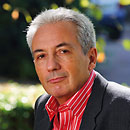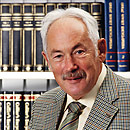Magnetic sandwich behind IT revolution
|
|
|
A small magnetic change can make a major difference to an electrical current. This is the basis of a responsive sensor that uses giant magnetoresistance. This effect opened the door for a completely new development in electronics, spintronics, and has in the last decade revolutionized techniques for scanning data on hard disks. |
|
Albert Fert and Peter Grünberg discovered the phenomenon of giant magnetoresistance simultaneously but independently in 1988. |
||
Nobel Prizes and laureates
Six prizes were awarded for achievements that have conferred the greatest benefit to humankind. The 12 laureates' work and discoveries range from proteins' structures and machine learning to fighting for a world free of nuclear weapons.
See them all presented here.


